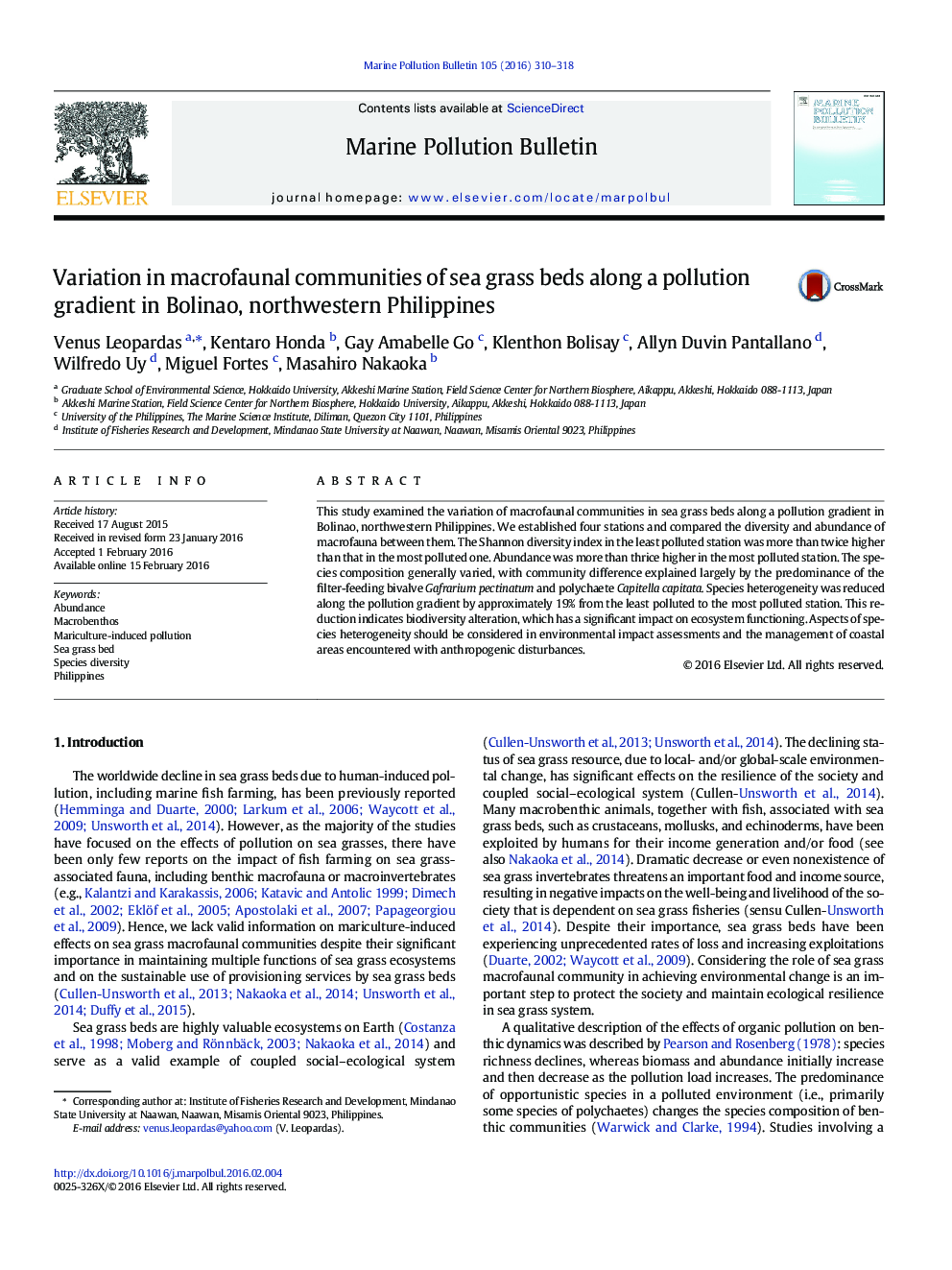| Article ID | Journal | Published Year | Pages | File Type |
|---|---|---|---|---|
| 4476544 | Marine Pollution Bulletin | 2016 | 9 Pages |
•Variation of macrofaunal assemblages in sea grass beds along a pollution gradient was determined.•The Shannon diversity index was more than twice higher in the least polluted station.•Abundance was more than thrice higher in the most polluted station.•Gafrarium pectinatum and Capitella capitata explained most of assemblage variations across stations.•Species heterogeneity was reduced by approximately 19% from the least polluted to the most polluted station.
This study examined the variation of macrofaunal communities in sea grass beds along a pollution gradient in Bolinao, northwestern Philippines. We established four stations and compared the diversity and abundance of macrofauna between them. The Shannon diversity index in the least polluted station was more than twice higher than that in the most polluted one. Abundance was more than thrice higher in the most polluted station. The species composition generally varied, with community difference explained largely by the predominance of the filter-feeding bivalve Gafrarium pectinatum and polychaete Capitella capitata. Species heterogeneity was reduced along the pollution gradient by approximately 19% from the least polluted to the most polluted station. This reduction indicates biodiversity alteration, which has a significant impact on ecosystem functioning. Aspects of species heterogeneity should be considered in environmental impact assessments and the management of coastal areas encountered with anthropogenic disturbances.
